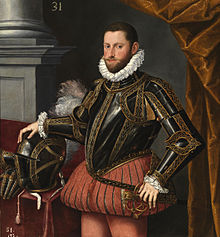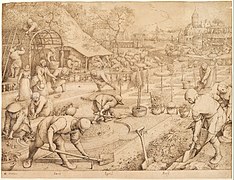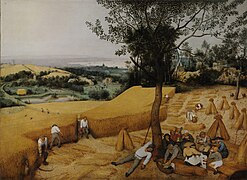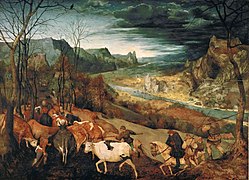Archduke Ernest of Austria
This article relies largely or entirely on a single source. (October 2012) |
| Archduke Ernest | |
|---|---|
 Portrait by Alonso Sánchez Coello c. 1580 | |
| Born | 15 June 1553[1] Vienna |
| Died | 20 February 1595 (aged 41) Brussels |
| House | Habsburg |
| Father | Maximilian II, Holy Roman Emperor |
| Mother | Maria of Spain |

Archduke Ernest of Austria (German: Ernst von Österreich; 15 June 1553[1] – 20 February 1595) was an Austrian prince, the son of Maximilian II, Holy Roman Emperor, and Maria of Spain.
Biography[]
Born in Vienna, he was educated with his brother Rudolf II, Holy Roman Emperor, in the court of Spain. In 1573 and 1587, he was a candidate for the throne of Poland. From 1576 onwards, he was governor in the Archduchy of Austria, where he promoted the Counter-Reformation. In 1590, he became governor of Inner Austria as regent for his young cousin Ferdinand, and from 1594 to 1595 he served as governor of the Spanish Netherlands.
He died in Brussels in 1595. He owned Pieter Bruegel the Elder surviving Months of the Year cycle [one painting High Spring (April/May) is lost]:

The Gloomy Day (February/March)

A 1565 Brugel sketch "Spring" although not part of the Months cycle series it could very well be similar to what Bruegel had in mind when he painted "High Spring" {April/May)

The Hay Harvest (June/July)

The Harvesters (August/September)

The Return of the Herd (October/November)

The Hunters in the Snow (December/January)
Ancestry[]
| showAncestors of Archduke Ernest of Austria |
|---|
References[]
- ^ Jump up to: a b Joseph Haydn, James Bertrand Payne: Haydn's universal index of biography from the creation to the present time: for the use of the statesman, the historian, and the journalist, E. Moxon, 1868. pp. 156
- ^ Jump up to: a b Press, Volker (1990), "Maximilian II.", Neue Deutsche Biographie (in German), 16, Berlin: Duncker & Humblot, pp. 471–475; (full text online)
- ^ Jump up to: a b Wurzbach, Constantin, von, ed. (1861). . Biographisches Lexikon des Kaiserthums Oesterreich [Biographical Encyclopedia of the Austrian Empire] (in German). 7. p. 19 – via Wikisource.
- ^ Wurzbach, Constantin, von, ed. (1861). . Biographisches Lexikon des Kaiserthums Oesterreich [Biographical Encyclopedia of the Austrian Empire] (in German). 7. p. 112 – via Wikisource.
- ^ Jump up to: a b c Chisholm, Hugh, ed. (1911). . Encyclopædia Britannica. 15 (11th ed.). Cambridge University Press.
- ^ Jump up to: a b c d Priebatsch, Felix (1908), "Wladislaw II.", Allgemeine Deutsche Biographie (ADB) (in German), 54, Leipzig: Duncker & Humblot, pp. 688–696
- ^ Jump up to: a b Charles V, Holy Roman Emperor at the Encyclopædia Britannica
- ^ Jump up to: a b c d Stephens, Henry Morse (1903). The story of Portugal. G.P. Putnam's Sons. pp. 125, 139, 279. ISBN 9780722224731. Retrieved 11 July 2018.
- ^ Holland, Arthur William (1911). . In Chisholm, Hugh (ed.). Encyclopædia Britannica. 17 (11th ed.). Cambridge University Press.
- ^ Poupardin, René (1911). . In Chisholm, Hugh (ed.). Encyclopædia Britannica. 5 (11th ed.). Cambridge University Press.
- ^ Boureau, Alain (1995). The Lord's First Night: The Myth of the Droit de Cuissage. Translated by Cochrane, Lydia G. The University of Chicago Press. p. 96.
- ^ Noubel, P., ed. (1877). Revue de l'Agenais [Review of the Agenais]. 4. Société académique d'Agen. p. 497.
- ^ Jump up to: a b Harris, Carolyn (2017). Raising Royalty: 1000 Years of Royal Parenting. Dundurn Press. p. 78.
- 1553 births
- 1595 deaths
- Nobility from Vienna
- Candidates for the Polish elective throne
- Governors of the Habsburg Netherlands
- 16th-century House of Habsburg
- Knights of the Golden Fleece
- Burials at the Cathedral of St. Michael and St. Gudula
- Austrian princes





